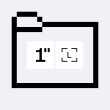A critical vulnerability in printers has led to the hacking of thousands of printing devices not at just one location or city but across the globe. Reportedly, the flaw was exploited by a hacker called Stackoverflowin, who managed to hack 150,000 printers at a global level.
The hacking spree seems to be the hacker’s way to inform the world regarding the vulnerable nature of printers because as per his findings the Internet-connected printers are functioning without any firewall protection. This is the main reason why almost any hacker can exploit them, said the hacker.
“People have done this in the past and sent racist flyers, etc. I’m not about that, I’m about helping people to fix their problem, but having a bit of fun at the same time ;) Everyone’s been cool about it and thanked me, to be honest,” claimed the hacker.
To prove his point, Stackoverflowin used an automated script and scanned the web for identifying printing devices containing open port 9100, Internet Printing Protocol (IPP) and Line Printer Daemon (LPD). Once he was successful in finding such devices, he immediately issued a command to the devices for carrying out rogue printing jobs. It is worth noting that the automated script was written by Stackoverflowin as well.
The error indicates your printer has been hacked. What's the model name of the printer? Let me know :) Thanks! ^Asmita
— HP Support (@HPSupport) February 4, 2017
The hacker also issued warning messages to the users of targeted printers. Some of the messages notified the recipient that the printer has been “Pwned” and that the device has now become a part of the “flaming botnet.” The users were asked in one of the messages to close the port. There were two different messages sent by the hacker; the first one showed ASCII art on a robot while the other showed ASCII art with a computer.
I'm honestly just impressed with these printer hacks more than anything. Thanks for entertaining me during my double shift? @lmaostack pic.twitter.com/EzFXmqmDeo
— Faith Kennedy (@faithers99) February 4, 2017
@lmaostack i got it today!!! Damn ? pic.twitter.com/FIjZgTCAYB
— Vikingo (@ElTioVikingo) February 5, 2017
What new robot will we get today @lmaostack pic.twitter.com/dFyu0CCVLR
— KevM (@KevinM90) February 5, 2017
Oh look, it's our biggest fan ???@lmaostack pic.twitter.com/hHoS4UuXJd
— Happy Joe's (@happyjoeslc) February 5, 2017
@lmaostack nice pic.twitter.com/QShhMxiLD2
— Obeypoppunk (@BlissfullPizza) February 5, 2017
https://twitter.com/Josh_Newe/status/828013187425406983
@lmaostack making my day at work the past two days. pic.twitter.com/cX5HgflU46
— Patric (@fortherogue) February 4, 2017
Naturally, users feel amused and confused, and many of them had no idea what to do. The problem was a lot more severe to handle because the flaw made printers from all existing brands including HP, Epson, Canon, Brother, Konica Minolta and Samsung vulnerable. All in all, 150,000 printers were hacked.









